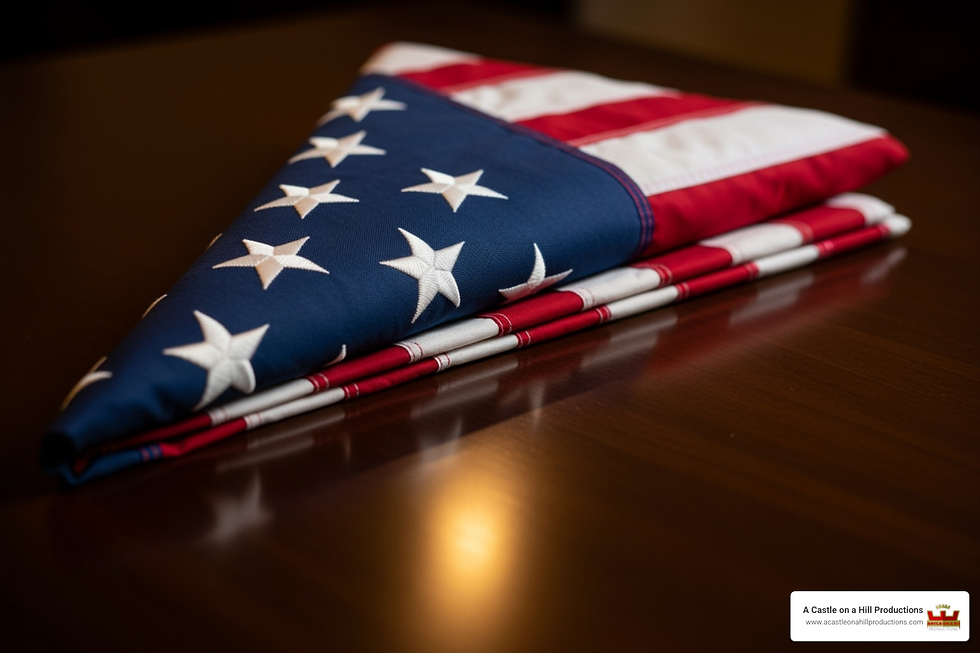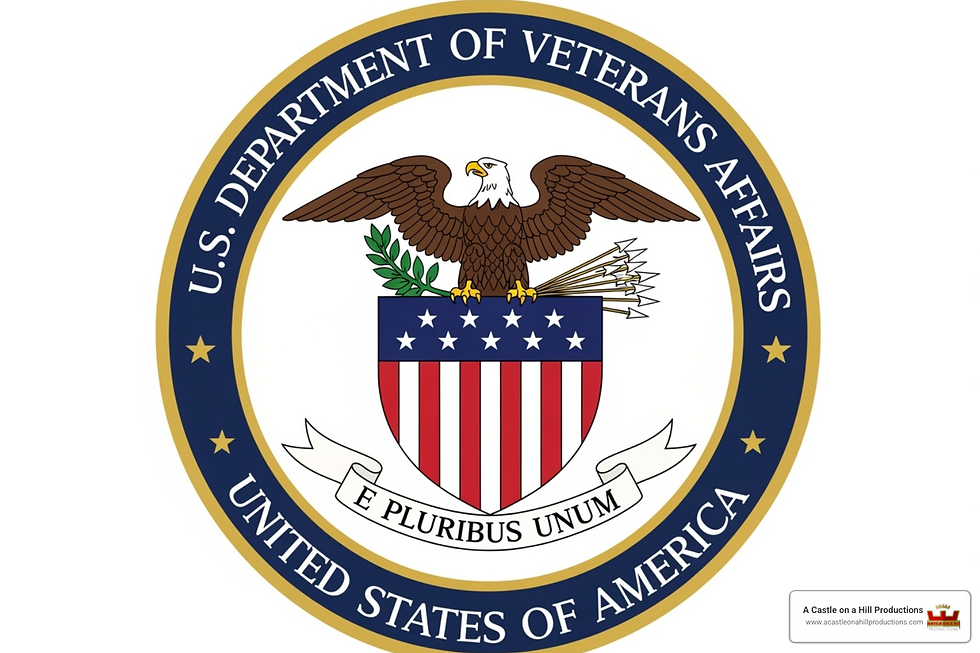Honoring Our Heroes: Strategies for Veteran Suicide Prevention
- Gary Otte
- Aug 5
- 8 min read
Why Veterans Suicide Prevention Matters More Than Ever

Veterans suicide prevention is a national crisis demanding collective action. The issue is stark: an average of 17 veterans die by suicide every day in the United States.
Key Veterans Suicide Prevention Facts:
Veteran suicide rate is 1.5 times higher than non-veterans.
73.5% of veteran suicides involve firearms.
9 out of 17 daily veteran suicides occur among those who never received VA services.
Crisis support is available 24/7 through the Veterans Crisis Line (988, Press 1).
In 2022, 6,407 veterans died by suicide, a rate of 34.7 per 100,000 compared to 17.1 for non-veteran adults. Female veterans with positive Military Sexual Trauma screens face suicide rates 75% higher than their peers.
However, there is hope. Recent data shows a 24.1% decrease in suicide rates among female veterans from 2021 to 2022. The VA's comprehensive approach combines clinical and community-based strategies, recognizing that prevention requires everyone's involvement.
I'm Gary Otte of A Castle on a Hill Productions. With a background in the U.S. Army Corps of Engineers and professional cinematography, I am dedicated to creating powerful visual stories that support veterans suicide prevention and help our heroes find hope.
The Scale of the Crisis: Understanding Veteran Suicide
Understanding the scale of veteran suicide is the first step toward making a difference. The statistics represent lives lost and families grieving.

Suicide Rates and Demographics
In 2022, 6,407 veterans died by suicide. The rate for veterans was 34.7 per 100,000, significantly higher than the 17.1 per 100,000 among non-veteran adults. While the age-adjusted suicide rate for female veterans encouragingly decreased by 24.1% from 2021 to 2022, the rate for male veterans rose by 1.6%. This highlights the need for continued, focused veterans suicide prevention efforts across all demographics.
Firearm Statistics and VA Care
A staggering 73.5% of veteran suicide deaths in 2022 involved a firearm, compared to 48.1% among non-veteran adults. Because firearms are highly lethal in suicide attempts, promoting secure firearm storage is a vital prevention strategy.
Furthermore, many veterans at risk are not connected to the VA healthcare system. In 2017, nine of the 17 veterans who died by suicide each day had not received recent VA services, underscoring the need for community-based outreach.
For a deeper dive into these statistics, review the 2024 National Veteran Suicide Prevention Annual Report.
Understanding the Risk Factors for Veterans Suicide Prevention
Suicide risk is complex, often stemming from a combination of factors tied to military service and the transition to civilian life.
Mental Health Conditions: PTSD, depression, and substance abuse are significant contributors. Veterans with sedative use disorder had a suicide rate of 236.7 per 100,000 in 2022. Traumatic Brain Injury (TBI) and psychoses also lift risk.
Transition Stress: Challenges like loss of purpose, unemployment, and social isolation are common problems for veterans returning to civilian life.
Life Stressors: Relationship issues, financial strain, and homelessness significantly increase a veteran's risk. While the suicide rate among veterans experiencing homelessness dropped 19.1% from 2021 to 2022, it remains a critical factor.
Military Sexual Trauma (MST): Veterans who experienced MST have significantly higher suicide rates (75% higher for females, 74.6% higher for males) compared to those who have not.
Other Factors: Involvement with the justice system and identifying as an LGBTQ+ veteran are also associated with higher suicide rates.
Access to Lethal Means: Easy access to firearms during a crisis drastically increases the chance of a fatal outcome.
These interconnected factors show why veterans suicide prevention requires a holistic approach that addresses clinical, social, and economic needs.
A Public Health Approach: The National Strategy for Veterans Suicide Prevention
The Department of Veterans Affairs (VA) spearheads a comprehensive public health approach to veterans suicide prevention, treating it as their top clinical priority. This strategy combines clinical care with community-based efforts to support veterans wherever they are.

Key Clinical and Institutional Interventions
The VA employs several key interventions to provide direct support:
Universal Screening: The VA routinely screens for suicide risk across all its healthcare settings, identifying at-risk veterans early.
REACH-VET Program: This program uses predictive analytics to identify veterans at high risk for suicide, allowing for proactive outreach and support.
Safety Planning: Collaborating with veterans to create personalized safety plans is a core strategy. The Safety Planning in Emergency Departments (SPED) program has reduced suicidal behaviors by 45% in the six months following an ER visit.
Same-Day Mental Health Access: The "My VA Access Initiative" aims to provide immediate mental health and primary care services, reducing wait times and barriers to care.
Primary Care-Mental Health Integration (PCMHI): By embedding mental health services in primary care clinics, the VA makes it easier for veterans to access support.
Veterans Crisis Line: This 24/7 lifeline provides immediate, confidential support. Learn how our work supports these efforts by visiting More info about our mission.
Community-Based Outreach and Data-Driven Strategy
Recognizing that many veterans are outside the VA system, community outreach is essential. The VA fosters partnerships through Governor's and Mayor's Challenges and supports Community Engagement Coordinators to build local support networks. For rural areas, the Together with Veterans (TWV) program empowers veteran-led prevention efforts.
All these strategies are data-driven, developed in partnership with the DoD and CDC to ensure effectiveness. The VA also invests heavily in Research and Development to find new, evidence-based interventions. This aligns with The White House’s national strategy to reduce military and veteran suicide.
It Takes a Village: How Everyone Can Help
Effective veterans suicide prevention requires a "whole-of-community" approach. It's a collective effort from families, friends, and community organizations to create a supportive environment for veterans.

Individual Actions Matter
One of the biggest barriers is the stigma around mental health. We can help by:
Promoting Open Conversation: Talking openly about mental health normalizes the experience and encourages veterans to seek help.
Practicing Active Listening: When a veteran opens up, give them your full, non-judgmental attention. Validate their feelings and let them know they are heard.
Showing Support: Simple check-ins, helping a veteran connect with resources, or spending time with them can combat loneliness and show you care. Every act of connection contributes. Learn more about how we are Uniting to Prevent Veteran Suicide.
Community-Based Strategies for Veterans Suicide Prevention
Organized community efforts are vital for reaching veterans outside of VA care.
Community Coalitions: The VA works with local coalitions to provide resources where over 70% of veterans live.
VA S.A.V.E. Training: This free course teaches anyone how to Sign of crisis, Ask about suicide, Validate their experience, and Encourage help-seeking.
Lethal Means Safety: Promoting secure firearm storage is a critical community strategy. The VA distributes free gun locks and partners with organizations to encourage responsible storage, which creates life-saving time and space during a crisis.
Peer Support Programs: Connecting veterans with peers who have similar experiences, like through Stop Soldier Suicide's ROGER service, fosters camaraderie and healing.
Recognizing the Warning Signs
Knowing the signs that someone may be considering suicide is crucial for early intervention. Be concerned if you notice a combination of these signs, especially if they are new or worsening:
Hopelessness or feeling trapped
Anxiety, agitation, or extreme mood swings
Increased substance use
Withdrawing from friends and family
Reckless behavior
Giving away cherished possessions
Changes in sleep patterns
Neglecting personal appearance
Expressing guilt or shame, or feeling like a burden
Searching for ways to end their life
If you observe these signs, act. Trust your instincts and consult this Full list of crisis signs for more information.
Immediate Help and Long-Term Resources
When a veteran is in crisis, immediate action can save a life. Beyond that critical moment, a network of ongoing support is available to help veterans and their families build lasting resilience.
For Veterans in Crisis
If you or a veteran you know is having thoughts of suicide, immediate, confidential support is always available. You are not alone.
The Veterans Crisis Line is a 24/7 lifeline for veterans, service members, and their families.
Dial 988 then Press 1 to talk.
Start a Confidential Chat online at their website.
Text 838255 for support.
For hearing loss, use the TTY line at 800-799-4889.
In an emergency, go to the nearest Local VA Medical Center or any Emergency Room. Inform the staff that you are a veteran.
Ongoing Support for Veterans and Families
Veterans suicide prevention is a long-term commitment. The VA and its partners offer a wide array of resources for ongoing mental health care.
Suicide Prevention Coordinators: Located at every VA medical center, these professionals provide ongoing support and help connect veterans to services.
Vet Centers: These centers offer free, confidential readjustment counseling for combat veterans and their families.
MakeTheConnection.net: This online resource features videos of veterans sharing their real stories of recovery, reducing stigma and showing that healing is possible.
Coaching Into Care: A free, confidential phone service for family and friends, providing guidance on how to help a veteran seek care. Call 888-823-7458 (TTY: 711).
SSG Fox SPGP: This grant program funds community organizations that provide suicide prevention services to veterans and their families, especially those not enrolled in VA care.
You can Find local resources on the Veterans Crisis Line website. For more stories of hope, visit Our Blog with more stories.
Frequently Asked Questions about Veteran Suicide Prevention
Here are answers to common questions about veterans suicide prevention to provide clarity and empower you with information.
Do I have to be enrolled in VA care to get help?
No. The Veterans Crisis Line is for all veterans, service members, and their families, regardless of VA enrollment status. If a veteran in crisis goes to a non-VA emergency room, the VA may cover the cost of emergency mental health care and related services for up to 90 days, even if they are not enrolled in VA health care. Always let emergency staff know you are a veteran and ask them to contact the VA. Many community-based programs also offer services to veterans outside the VA system.
What is the most important thing I can do if I think a Veteran is suicidal?
Act immediately. Your direct action can be life-saving.
Ask directly: Asking "Are you thinking about suicide?" will not plant the idea. It opens the door for them to talk.
Listen without judgment: Let them know you hear them and their feelings are valid.
Connect them with help: Call the Veterans Crisis Line with them at 988 then Press 1. If they are in immediate danger, go to the nearest ER.
Stay with them: Do not leave them alone until professional help arrives.
Secure lethal means: If possible and safe, remove or secure firearms, medications, or other potential means of self-harm.
A suicide crisis is often brief. Your intervention can make all the difference.
How does secure firearm storage help prevent suicide?
Secure firearm storage is a critical component of veterans suicide prevention, especially since firearms are involved in a high percentage of veteran suicides. It works by creating time and space between a person in a suicidal crisis and a highly lethal method. A suicidal crisis is often intense but brief.
Storing firearms securely—unloaded, locked, with ammunition stored separately—introduces a crucial delay. This delay can allow the intense suicidal thoughts to pass or provide an opportunity for someone to intervene. Because firearms have a nearly 90% fatality rate in suicide attempts, reducing immediate access is a proven life-saving strategy.
Conclusion: A Shared Mission of Hope and Healing
Veterans suicide prevention is a complex challenge that requires our sustained empathy and collective action. The clear message is that we all have a part to play in this shared mission.
A Collective Responsibility and the Power of Story
Preventing veteran suicide is not the VA's job alone; it's a collective responsibility. It requires us to break down the stigma around mental health, listen without judgment, and ensure our heroes can access the care they deserve. As the VA's 2024 report states, "VA alone cannot end Veteran suicide."
At A Castle on a Hill Productions, we believe in the power of storytelling. My work in cinematography is dedicated to creating films that shine a light on the veteran experience, fostering understanding and inspiring hope. By sharing real stories of struggle and recovery, we can reach veterans who feel alone and encourage them to seek help.
A Path Forward
The challenges are significant, but progress is being made. The dedication of the VA, non-profits, and community groups shows that effective veterans suicide prevention is possible. We are committed to standing by our veterans and ensuring they find the peace and support they have earned.
Join us in this vital mission. To better understand the impact of veteran suicide and the efforts to combat it, we encourage you to Watch the "Saving 22" documentary to learn more. Together, we can light the path forward, one story and one life at a time.




Yorumlar